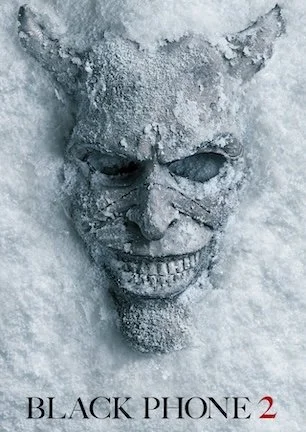Studio: Vision Films
Director: R.P. Patnaik
Writer: R.P. Patnaik
Producer: Prasad Kunisetty, Ramesh Nuti
Stars: Jessica DiGiovanni, Kurt Peterson, Jane Doherty, Clayton Meyers, Kris Smith, Victoria Doll, David Blount, David R. Clayton, Christopher Atkins
Review Score:
Summary:
As the only person in her Amish community able to see possessed souls, Amy must team with an outsider to save her village.
Review:
“Amy” is awful. This review could end on those three words and come in just one word over the dream of equaling the brilliantly brief review of Spinal Tap’s “Shark Sandwich” album. Regrettably, film critic standards mandate an explanation, requiring even more time to be drained by this vampire of a film.
The best thing going for “Amy” is its Amish community backdrop, which is a setting not often seen in horror, or even movies in general. Yet utilizing that location to the film’s advantage is only the first ball dropped by “Amy” as depicting the village’s simple lifestyle is limited to watching the women hang laundry on a clothesline and sweep manure out of a barn. It is far from being a fascinating peek behind the Amish curtain.
Amy is a bonnet-clad young woman milling about contentedly until she realizes that she has the ability to see evil souls possessing fellow villagers. The only person who believes that what Amy sees is real is a mysterious outsider named Chris. Together, the unlikely pair begins an exorcism of sorts to rid the Amish village of its devilish spirits and to uncover the identity of the person responsible for unleashing the evil.
If only they had an Associate Spellchecker, too.
It is difficult to pinpoint if it is the Amish speech patterns applied to the dialogue, a poorly written script, or painfully inadequate acting that holds the most blame for the stunted line delivery. Nearly everyone in the film sounds like a preprogrammed automaton, as though the screenplay is being read aloud by a room full of monotone Siris. The lone exception is Christopher Atkins, who lays on a throaty whisper so thick, it sounds as if he is gargling sand.
As Amy, Jessica DiGiovanni’s performance shows the most potential, and it might have improved had she been afforded more takes to work out the kinks. But every scene appears to have been shot only once, no matter how it turned out. Any time someone stumbles over dialogue, it stays in the movie, leaving awkward gaps to separate words mid-sentence as actors fumble to remember their lines.
An interview with R.P. Patnaik at RealBollywood.com quotes the director as saying, “… a lot of time was spent on the post-production … This film will be my ticket to Hollywood … We spent over $2 million in the making of the film, especially on the visual effects and graphics.” That last sentence can mean only one of three things. Patnaik is either outright lying in an attempt to make “Amy” seem like a bigger production than it is, that amount is in something other than U.S. dollars, or some gloating charlatan is sipping mai tais on an island somewhere after cashing a fat check for $50 worth of special effects.
Are you serious with these ghosts?
The digital ghosts are an absolute joke. Animated words dance off a Bible page and into the real world. Superimposed angry faces struggle to stay aligned with the actors onscreen. A vision of a possessed baby is some woeful combination of a plastic doll and a crudely animated eyelid.
The rest of the movie is just as bad. Scenes occasionally cut to random insert shots of nonsensical things like a socket wrench being removed from a pocket or a pumpkin pie coming out of an oven. The music rarely pauses, and the compositions are either over orchestrated or misplaced with the events onscreen.
Worse still, “Amy” is not even remotely frightening. The first girl to be possessed is seen once or twice and then never again. Amy mentions visions of two more victims, but they are never shown at all. The possessed then either die offscreen or stare wide-eyed at their fingertips. No one commits any actual act of evil or presents any visible threat to anyone at all.
“Amy” could be criticized for paragraphs on end, yet any more would feel like a bully making fun of someone with a handicap. It just is not fair. The film is truly bad, but in a pitiable way. It is not so bad that it stands a chance of seeing a second life as a cult favorite midnight movie in ten years time. It is not so bad that pleasure can be had by riffing on it MST3K-style. It is not even insultingly bad in the way that some movies seem to mock the viewer for even watching it. “Amy” is the kind of bad produced by misguided filmmakers that just do not know any better. And sadly, the only emotion “Amy” evokes from the audience is head shaking sympathy for everyone involved.
Review Score: 10






If “Match” had been shot in the 1970s, it would have become a cult classic for its skin-crawling weirdness that’s still snicker-worthy in a wicked way.